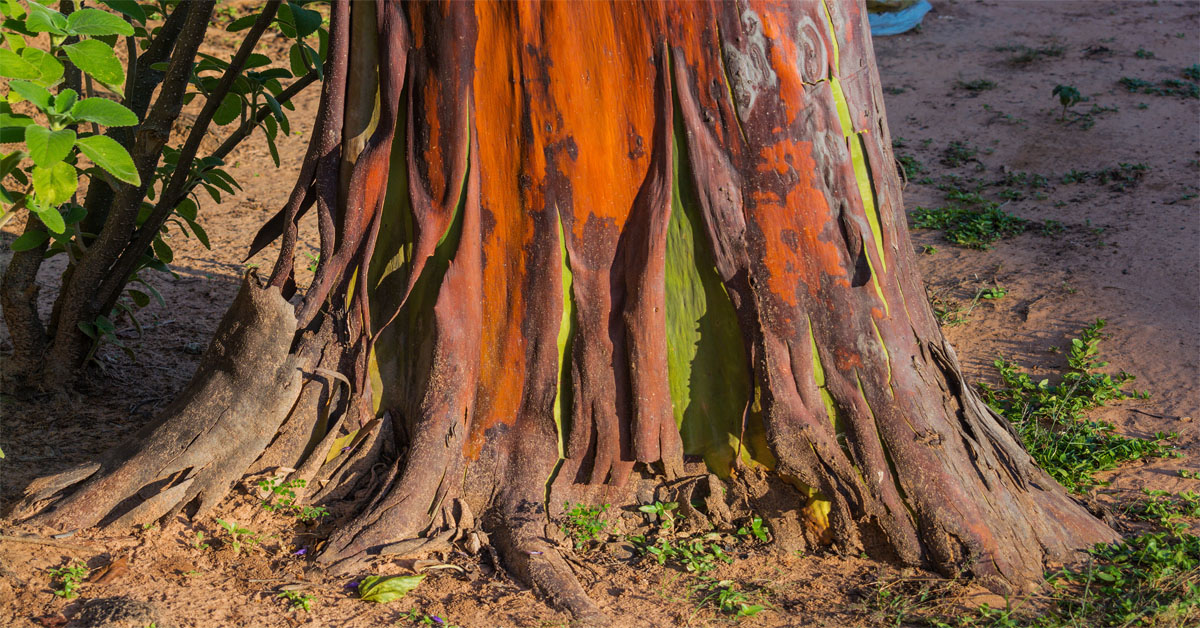FOREVER THE FOREST
The Wonders of Mulateiro Bark: A Natural Amazonian Remedy
Exploring the Traditional and Scientific Benefits of Calycophyllum spruceanum
Mulateiro bark, also known as Calycophyllum spruceanum or “palo de mulato,” is a remarkable tree native to the Amazon rainforest in South America. For centuries, indigenous communities have harnessed various parts of the mulateiro tree for traditional medicinal purposes. The bark of the mulateiro tree is particularly valued for its potential health benefits, ranging from skincare to wound healing and antimicrobial properties. However, it is important to acknowledge that scientific research on mulateiro bark remains limited, and many of its traditional uses have not been extensively studied. Therefore, the information presented here is based primarily on traditional knowledge and preliminary scientific findings.
The Botanical and Ecological Significance of Mulateiro
Mulateiro is a fast-growing tree that plays a vital ecological role in the Amazon rainforest. It thrives in floodplain areas and along riverbanks, helping to stabilize soil and prevent erosion. The tree’s bark regenerates rapidly, shedding old layers and producing new ones, a unique characteristic that has contributed to its reputation as a natural anti-aging agent. This rapid regeneration has fascinated scientists and traditional healers alike, leading to further exploration of its potential applications in medicine and skincare.
Traditional and Medicinal Uses of Mulateiro Bark
1. Skin Health and Rejuvenation
Mulateiro bark has been widely used in traditional medicine to support skin health. It is believed to contain potent anti-inflammatory and antioxidant compounds that help soothe irritated skin, reduce redness, and promote overall skin rejuvenation. Indigenous communities have used the bark to treat various skin conditions, including:
- Rashes and Eczema: Due to its anti-inflammatory properties, mulateiro bark is often applied to alleviate symptoms of skin irritation.
- Cuts and Insect Bites: The bark’s potential antimicrobial effects make it a natural remedy for treating minor wounds and insect bites.
- Acne and Blemishes: Some traditional uses include preparing a decoction from the bark to cleanse the skin and reduce acne-related inflammation.
2. Wound Healing and Tissue Regeneration
One of the most notable benefits of mulateiro bark is its ability to promote wound healing. It is thought to accelerate tissue regeneration and aid in preventing infections. In indigenous medicine, mulateiro bark is often crushed or made into a paste and applied directly to wounds, burns, and ulcers to speed up the healing process.
3. Anti-Aging and Antioxidant Properties
The bark of the mulateiro tree is rich in antioxidants, which help neutralize free radicals that contribute to premature aging. This has led to its incorporation into various beauty and skincare products. The tree’s natural ability to shed and regenerate its bark has also been linked metaphorically to its use in maintaining youthful skin. Some benefits associated with its antioxidant properties include:
- Reducing fine lines and wrinkles.
- Enhancing skin elasticity.
- Protecting the skin from environmental damage.
4. Anti-Inflammatory Benefits
Mulateiro bark is traditionally used to combat inflammation, and it is believed that certain bioactive compounds in the bark contribute to its effectiveness. This makes it a promising natural remedy for conditions such as:
- Arthritis and joint pain.
- Muscle soreness.
- Skin inflammation and irritation.
5. Pain Relief and Muscle Relaxation
Traditional Amazonian healers have used mulateiro bark as a natural pain reliever. It is commonly prepared as a tea or topical application to alleviate:
- Joint pain and arthritis.
- Muscle aches and tension.
- Headaches and migraines. While anecdotal evidence supports these uses, further scientific studies are needed to confirm their efficacy.
6. Digestive Support and Gut Health
Mulateiro bark has also been used traditionally to aid digestion and alleviate gastrointestinal issues. It is believed to possess properties that help:
- Soothe stomach discomfort.
- Reduce bloating and indigestion.
- Support overall digestive health.
7. Antimicrobial and Antifungal Properties
Some traditional practices suggest that mulateiro bark has antimicrobial and antifungal effects, making it useful in preventing or treating infections. Studies on similar Amazonian plants indicate potential antibacterial activity, though further research is needed to validate these claims for mulateiro.
Scientific Studies and Modern Research
While traditional knowledge highlights the many uses of mulateiro bark, scientific research remains in its early stages. Some preliminary studies suggest that the bark contains phenolic compounds and flavonoids, which are known for their antioxidant and antimicrobial properties. Researchers are particularly interested in its potential applications in dermatology and wound healing, given its regenerative properties.
How Mulateiro Bark is Used Today
Mulateiro bark is available in various forms, including:
- Powdered extract: Often used in supplements and skincare formulations.
- Decoctions and teas: Prepared by boiling the bark in water for internal and external applications.
- Tinctures: Alcohol-based extracts used for medicinal purposes.
- Skincare products: Found in creams, serums, and soaps for anti-aging and skin health benefits.
Safety Considerations and Precautions
As with any herbal remedy, it is essential to exercise caution when using mulateiro bark. Before incorporating it into your routine, consider the following:
- Consult a healthcare professional: Especially if you have pre-existing medical conditions or are taking medications.
- Pregnant or breastfeeding individuals should avoid use: Due to the lack of research on its safety in these situations.
- Allergic reactions: Conduct a patch test before applying it to the skin to rule out any allergic response.
- Dosage and preparation: Follow recommended guidelines to avoid potential side effects.
Mulateiro bark is a fascinating natural remedy with a rich history of traditional use in the Amazon rainforest. Its potential benefits for skin health, wound healing, anti-aging, and inflammation make it a valuable plant in herbal medicine. While scientific research is still catching up with traditional knowledge, preliminary findings suggest promising applications. As interest in natural and sustainable health solutions grows, mulateiro bark may become an increasingly popular ingredient in both medicinal and cosmetic industries. However, responsible use and further scientific validation remain crucial to fully understanding its benefits and safety.

As always, if considering the use of mulateiro bark for health purposes, consulting with a qualified healthcare professional is recommended to ensure safe and appropriate usage.


